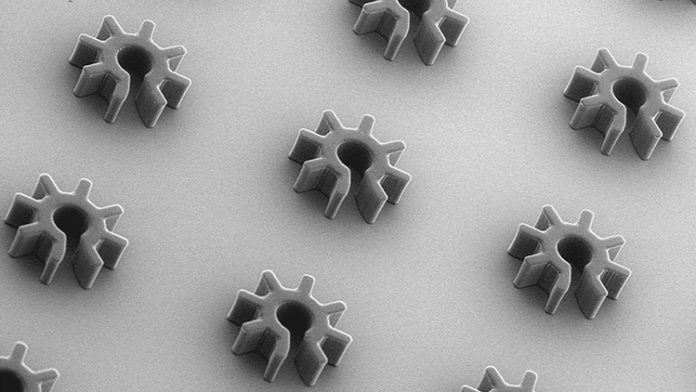Can a single cogwheel be an entire robot? These simple and tiny one-piece machines can easily be controlled using light, scooping up and moving individual cells in a tissue.
The technology was developed by University of Toronto co-authors was published in the Proceedings of the National Academy of Sciences (PNAS).
Their microrobots make use of optical tweezers: controlled light patterns that trap small particles using the force exerted by light. Optical tweezers are precise and so widely used in biology that their inventor shared the 2018 Nobel Prize in Physics, but mammalian cells are fragile and their direct manipulation is slow and tedious.
By contrast, these specially designed cogwheels can be easily repositioned by using patterns of light to influence the electric fields around them. Every second they can be moved up to half a millimeter along any axis, or rotated all the way around. They feature a small opening and a circular central chamber to capture, transport, and deliver sub-millimeter payloads.

The technique can be used to isolate single cells or microtissues, manipulate microscopic volumes inside closed systems, and influence cell-cell interactions. And all of this can be done using commercially available microscopes and consumer-grade optical projectors.
With greater speeds and less damage to target cells, these microrobots have the potential to enhance single-cell biology and give precise control over complex cellular microenvironments. They could also be used in a wide range of applications where miniaturization could be a benefit.
Accessing these tiny scales sets up these microrobots to make big moves in science.








































